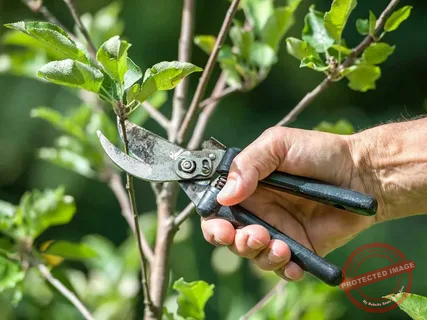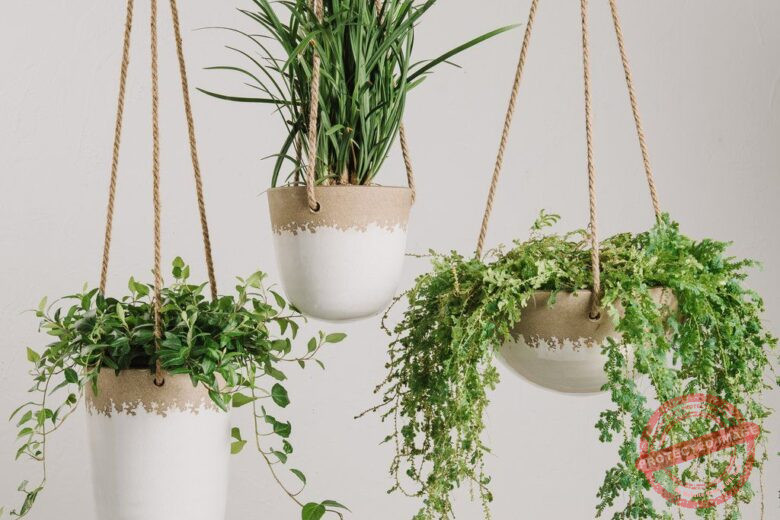Geraniums are beloved for their vibrant blooms and ease of care, making them a popular choice for both indoor and outdoor gardens. However, one common issue that gardeners often encounter with geraniums is the yellowing of leaves.
This problem can be frustrating, as it affects the plant’s appearance and may indicate underlying health issues. Understanding the causes of yellow leaves in geraniums and how to address them is crucial for maintaining healthy and thriving plants.
Yellowing leaves on geraniums can result from a variety of factors, including environmental conditions, nutritional deficiencies, and pest infestations. Each cause requires a specific approach to remedy the situation and restore your geraniums to their full glory. By identifying the root cause of the yellowing, you can implement the appropriate solutions and prevent the issue from recurring.
In this comprehensive guide, we will explore the most common reasons why geranium leaves turn yellow and provide effective solutions to each problem. Whether you are a seasoned gardener or a beginner, this information will help you keep your geraniums healthy and vibrant. Let’s dive into the details to ensure your geraniums remain a beautiful addition to your garden.
Common Causes of Yellowing Geranium Leaves
1. Overwatering
Overwatering is one of the most common reasons for yellowing leaves in geraniums. Geraniums prefer well-drained soil and can suffer when their roots sit in waterlogged conditions. Excess water can lead to root rot, a condition that hampers the plant’s ability to absorb nutrients and oxygen, causing the leaves to turn yellow.
Solution: To prevent overwatering, ensure your geraniums are planted in well-draining soil. Water the plants thoroughly but allow the soil to dry out between waterings. Consider using pots with drainage holes to facilitate proper water management.
2. Underwatering
Conversely, underwatering can also cause geranium leaves to turn yellow. When geraniums do not receive enough water, they cannot transport essential nutrients to the leaves, leading to yellowing and wilting.
Solution: Maintain a regular watering schedule, ensuring the soil is kept consistently moist but not soggy. Monitor the moisture level of the soil, especially during hot and dry weather, and adjust your watering routine accordingly.
3. Nutritional Deficiencies
Nutritional deficiencies, particularly a lack of nitrogen, can result in yellowing leaves. Nitrogen is essential for chlorophyll production, and a deficiency can cause older leaves to turn yellow while the veins remain green.
Solution: Feed your geraniums with a balanced, water-soluble fertilizer that contains nitrogen, phosphorus, and potassium. Follow the recommended dosage and frequency to avoid over-fertilization, which can also harm the plants.
4. Pest Infestations
Pests such as aphids, spider mites, and whiteflies can infest geraniums, sucking sap from the leaves and causing them to turn yellow. These pests not only damage the leaves but can also spread diseases.
Solution: Regularly inspect your geraniums for signs of pests. If you detect an infestation, use insecticidal soap or neem oil to treat the plants. Additionally, introduce beneficial insects like ladybugs that prey on harmful pests.
Environmental Factors Affecting Geraniums
1. Light Exposure
Geraniums thrive in full sunlight, and inadequate light can lead to yellowing leaves. If geraniums are grown in too much shade, they may not photosynthesize efficiently, resulting in yellow leaves.
Solution: Ensure your geraniums receive at least 6-8 hours of direct sunlight each day. If growing indoors, place the plants near a sunny window or use grow lights to supplement natural light.
2. Temperature Fluctuations
Extreme temperature fluctuations can stress geraniums, causing their leaves to turn yellow. Geraniums prefer moderate temperatures and can suffer if exposed to excessive heat or cold.
Solution: Maintain a stable temperature for your geraniums, ideally between 60-75°F (15-24°C). Protect outdoor plants from frost and provide shade during scorching summer days to prevent heat stress.
3. Soil pH Imbalance
Soil pH can significantly impact nutrient availability for geraniums. A pH that is too high (alkaline) or too low (acidic) can lead to yellowing leaves due to nutrient deficiencies.
Solution: Test the soil pH and aim for a slightly acidic to neutral range (pH 6.0-7.0). Amend the soil with lime to raise the pH or sulfur to lower it, depending on your soil test results.
4. Transplant Shock
Transplanting geraniums can sometimes cause transplant shock, leading to yellow leaves as the plant adjusts to its new environment. This stress can temporarily affect the plant’s ability to absorb water and nutrients.
Solution: Minimize transplant shock by watering the plants well before and after transplanting. Handle the roots gently and avoid disturbing them too much. Gradually acclimate the plants to their new location if moving them outdoors.
Diseases and Other Health Issues
1. Fungal Infections
Fungal infections such as botrytis blight and root rot can cause yellowing leaves in geraniums. These infections often result from poor air circulation and excessive moisture.
Solution: Improve air circulation around your geraniums by spacing them adequately and pruning any overcrowded foliage. Avoid overhead watering and use fungicides if necessary to control fungal infections.
2. Bacterial Blight
Bacterial blight is a serious disease that can cause yellowing leaves, wilting, and even death in geraniums. It spreads through contaminated soil and water, making it challenging to control.
Solution: Remove and destroy any infected plants to prevent the spread of bacterial blight. Practice good sanitation by sterilizing tools and avoiding overhead watering. Consider using disease-resistant geranium varieties.
3. Viral Infections
Viral infections can lead to yellowing leaves and distorted growth in geraniums. These infections are often spread by insect vectors and cannot be cured.
Solution: Prevent viral infections by controlling insect pests and removing any infected plants immediately. Maintain a healthy garden environment to reduce the risk of viral diseases.
4. Aging Leaves
As geraniums age, it’s natural for older leaves to turn yellow and die off. This process is part of the plant’s life cycle and does not necessarily indicate a problem.
Solution: Regularly prune away yellowing or dead leaves to maintain the plant’s appearance and encourage new growth. Focus on providing overall good care to keep the plant healthy.
Preventative Measures and Best Practices
1. Regular Monitoring
Consistent monitoring of your geraniums can help you detect issues early and address them before they become severe. Check your plants regularly for signs of yellowing leaves, pests, or diseases.
Solution: Develop a routine inspection schedule for your geraniums. Take note of any changes in leaf color, growth patterns, or overall plant health. Early intervention can prevent minor issues from escalating.
2. Proper Watering Techniques
Proper watering is crucial for preventing both overwatering and underwatering, which are common causes of yellowing leaves in geraniums.
Solution: Water your geraniums deeply but infrequently, allowing the soil to dry out between waterings. Use a moisture meter or check the soil with your finger to determine when it’s time to water.
3. Soil Quality and Fertilization
Ensuring that your geraniums are planted in high-quality soil and receive appropriate fertilization is key to preventing yellowing leaves due to nutrient deficiencies.
Solution: Use well-draining soil and consider adding organic matter such as compost to improve soil fertility. Fertilize your geraniums with a balanced, water-soluble fertilizer according to the recommended schedule.
4. Pruning and Maintenance
Regular pruning and maintenance help keep your geraniums healthy by removing dead or diseased leaves and promoting new growth.
Solution: Prune your geraniums regularly to remove yellowing leaves, spent flowers, and any damaged or diseased parts. This practice encourages air circulation and reduces the risk of fungal infections.
5. Seasonal Care
Adjusting your care routine to account for seasonal changes can help prevent yellowing leaves and other issues in your geraniums.
Solution: In colder months, bring potted geraniums indoors or provide frost protection for outdoor plants. During hot summer months, ensure your geraniums receive adequate water and some shade during the peak heat of the day.
Conclusion
Yellowing leaves on geraniums can be a frustrating problem, but with the right knowledge and care, it is manageable. By understanding the common causes of yellow leaves, such as overwatering, underwatering, nutritional deficiencies, and pest infestations, you can take appropriate steps to address these issues. Additionally, maintaining proper environmental conditions, monitoring for diseases, and implementing best practices in geranium care will help keep your plants healthy and vibrant.
Regularly inspect your geraniums, adjust your watering and fertilization routines as needed, and provide optimal growing conditions to prevent yellowing leaves. With diligent care and attention, your geraniums can thrive and continue to add beauty and color to your garden. By following the solutions and preventative measures outlined in this guide, you can ensure that your geraniums remain healthy, lush, and full of life.
FAQs
What causes yellow leaves on geraniums?
Yellow leaves on geraniums can result from overwatering, underwatering, nutritional deficiencies, pest infestations, and environmental stressors.
How can I prevent overwatering my geraniums?
Use well-draining soil, water deeply but infrequently, and ensure pots have drainage holes to prevent waterlogged conditions.
What nutrients do geraniums need to prevent yellowing leaves?
Geraniums require a balanced diet with adequate nitrogen, phosphorus, potassium, and other essential vitamins and minerals.
How can I protect my geraniums from pests?
Regularly inspect your plants for pests, use insecticidal soap or neem oil, and introduce beneficial insects like ladybugs to control pest populations.
What should I do if my geraniums are affected by fungal or bacterial infections?
Improve air circulation, avoid overhead watering, remove and destroy infected plants, and use appropriate fungicides or bactericides if necessary.



